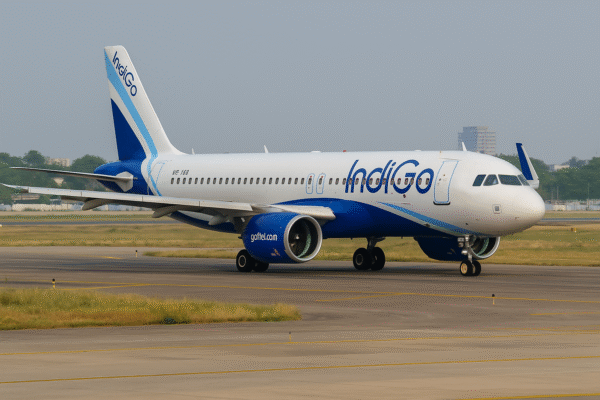IndiGo Launches Direct Flights from Hindon Airport, Boosting Regional Connectivity Across India
Ghaziabad, Uttar Pradesh – India’s aviation sector has entered a new era of regional connectivity with IndiGo’s latest launch of direct flights from Hindon Airport to nine key Indian cities. The move marks a significant milestone in improving accessibility for travelers across the National Capital Region (NCR), especially from Ghaziabad, Noida, Faridabad, Gurgaon, East and Central Delhi, and Western Uttar Pradesh.
IndiGo, India’s largest airline by market share, has introduced point-to-point services from Hindon to Ahmedabad, Bengaluru, Chennai, Goa, Indore, Kolkata, Mumbai, Patna, and Varanasi. This strategic expansion not only alleviates passenger pressure from Delhi’s overcrowded Indira Gandhi International Airport (IGI) but also empowers regional air travel under the Indian government’s UDAN (Ude Desh ka Aam Nagrik) scheme.
A Second Base for IndiGo in Delhi NCR
The launch of operations from Hindon Airport positions it as IndiGo’s second operational hub in the Delhi NCR after IGI Airport. Located in Ghaziabad, Hindon offers a more convenient option for millions residing in surrounding urban and semi-urban areas who previously faced long commutes to catch domestic flights.
According to IndiGo, nearly 70 weekly departures will operate from Hindon, offering travelers more scheduling flexibility and faster access to key commercial and cultural destinations. The move is aligned with the airline’s mission to “democratize air travel” by making flying accessible and hassle-free across India’s growing middle class.
Strengthening the UDAN Scheme and India’s Regional Infrastructure
Hindon Airport was operationalized in 2019 under the UDAN initiative, which aims to make air travel affordable for the masses while improving connectivity to underserved and unserved regions. Backed by the Ministry of Civil Aviation, UDAN provides viability gap funding (VGF) to airlines operating on low-traffic routes.
With this latest development, Hindon becomes a symbol of UDAN’s growing success. Civil Aviation Minister Jyotiraditya Scindia previously highlighted that expanding operations at tier-2 airports like Hindon was essential to decongest metro airports and promote balanced economic development.
The Ministry of Civil Aviation (MoCA) has also indicated plans to upgrade Hindon’s passenger terminal capacity to accommodate the rising traffic resulting from IndiGo’s expansion.
Convenience for Leisure and Business Travelers
For passengers traveling to and from cities like Mumbai, Bengaluru, Chennai, or Goa, the new routes slash travel time significantly by eliminating the need to cross congested parts of Delhi to reach IGI. This is a boon for corporate travelers, SMEs, and tourists alike.
Destinations like Varanasi and Patna are also seeing a boost in spiritual and heritage tourism. With Hindon serving as a direct hub, access to these locations becomes easier for pilgrims, domestic tourists, and international visitors flying into NCR.
According to the Directorate General of Civil Aviation (DGCA), India recorded over 13.2 million domestic air passengers in May 2025 alone—a 6.3% increase year-over-year. IndiGo’s decision to expand from regional airports is expected to fuel this growth further.
Economic Ripple Effects in Western Uttar Pradesh
Beyond convenience, the economic benefits of expanding Hindon Airport are beginning to show. With improved air access, Ghaziabad and nearby districts are witnessing increased investor interest in sectors like hospitality, logistics, retail, and real estate. Local businesses stand to benefit from better transport options for both goods and services.
The Ghaziabad Development Authority (GDA) has also signaled infrastructural enhancements near the airport to handle growing footfalls, including improved roadways, signage, and feeder transportation services.
IndiGo’s Broader Vision for Regional Aviation
IndiGo’s foray into Hindon is consistent with its broader strategy to penetrate India’s regional aviation market more deeply. With over 330 aircraft in its fleet and a robust domestic network, IndiGo continues to explore new point-to-point connections outside traditional metro airports.
In an official statement, IndiGo emphasized its commitment to “providing access to affordable air travel across India’s length and breadth,” adding that smaller airports will play a vital role in the next phase of India’s aviation expansion.
The airline’s regional model could inspire other carriers to consider similar expansions into second-tier airports, fostering healthy competition and offering travelers more choices.
A Growing Role for Regional Airports in India’s Future
India’s aviation market is projected to become the third-largest globally by 2030, according to the International Air Transport Association (IATA). With air passenger traffic in India growing at a compound annual growth rate (CAGR) of 10.3%, regional airports like Hindon are essential to meeting future demand.
The government’s Vision 2040 for the civil aviation sector predicts the number of operational airports in India to rise from 148 in 2023 to over 200 by 2040. Hindon’s rapid success underscores the value of expanding this infrastructure smartly.
Conclusion: A Game-Changer for Delhi NCR Air Travel
The launch of IndiGo’s direct flights from Hindon Airport to nine key Indian cities marks a transformative moment for regional air travel in India. It brings convenience, affordability, and opportunity to passengers and local businesses while supporting the government’s goals for inclusive infrastructure development.
As Hindon Airport evolves from a regional hub to a mainstream aviation gateway, the future of Indian air travel looks more decentralized, accessible, and passenger-friendly.
For more travel news like this, keep reading Global Travel Wire



















